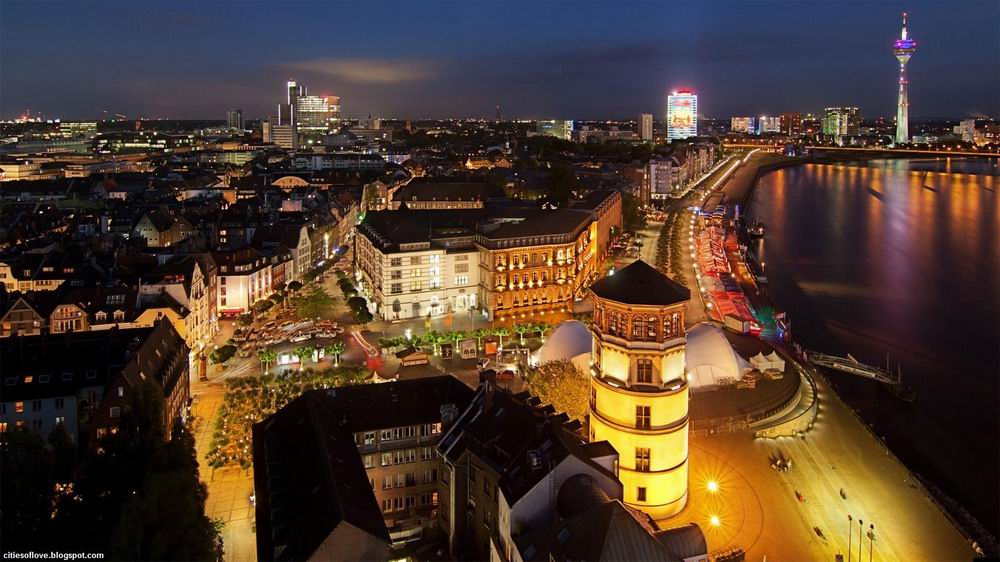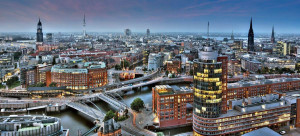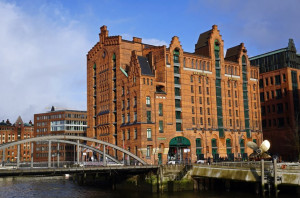This was built where the Alster flows into the Elbe. Despite numerous attacks by the Vikings, the settlement managed to establish itself. It was the battle against the Slavic Obriots in 832 that led to the demise of the archbishopric. The ascendancy of the Schauenburg Counts, who reigned until the 13th century enabled Hamburg to once again flourish and expand to the south of the Elbe.
1190 is the year in which the citizens of Hamburg actively attempted to release themselves from their aristocratic stranglehold. Unfortunately, everything they gained was lost eleven years later when the Danes conquered the city. They ruled until defeated by a militia, composed of citizens and various counts. The following years saw Hamburg become an important trade and merchant city, thanks to virtual autonomy.
In 1235 the damming of the Alster was carried out, giving the city one of its features that so many people admire today. When Hamburg joined the League of Hanseatic Cities in 1300, the city´s fortunes took a turn for the better.
In 1510, the Emperor Maximillian I made Hamburg an Imperial City. This meant that the city was directly subordinate to his person and therefore formed an important step in gaining emancipation from the Danes.
During the religious disputes of the 16th century, many Protestants and Jews sought refuge in Hamburg, thus adding a new dimension to the city. The resulting increase in population provided an economic and cultural stimulus.
The discoveries of the 15th century provided new opportunities for trade. In the span of a few years, the Hafen became one of the most important in the world and the city became one of Europe´s biggest trading venues.
In the 18th century, the economy of Hamburg continued to grow steadily. In 1810, Napoleon invaded Hamburg and this led to a significant downturn in fortune until the French left the city again in 1814. The Congress of Vienna in 1815 guaranteed the freedom of the city and it subsequently joined the German Federation.
The year 1842 marks one of the darkest periods in the city´s history. Nearly 20,000 people lost their homes when fire reduced nearly a third of the city centre to ashes. The building of railway lines to Kiel and Berlin and the development of steam ship routes led to an economic upswing that financed the systematic rebuilding of the city.
In 1867, Hamburg joined the North German League and in 1888, it joined the German Customs League, both of which proved to be crucial events in its historical development: Hamburg became known as Germany´s Gateway to the world. By 1912, Hamburg’s harbour was the thrid most imporant port in the world, after London and New York.
40,000 men died in the First World War (1914-1918) and the trade blockade meant that the city was cut off from world trade. Despite this, the city made a relatively quick recovery in the post-war period, which resulted in economic growth. Many shipping companies and other business began to move to the Speicherstadt. Reminders of this are the statuesque Kontorhäuser, built in red brick and buildings such as the Chilehaus, Sprinkenhof and the HAPAG-Lloyd office. The University of Hamburg was also founded in 1919.
The Allied bombing campaigns of World War Two changed the face of Hamburg: Approximately 50% of the city´s living area, 40% of its industrial and 80% of its harbour areas were laid to ruin. On the April 3, 1945, Hamburg surrendered and was occupied by British troops. In October 1946, a new city counil was elected and in 1952, a new constituion, which is still valid today, was drawn up.
Since the coming down of the iron curtain and the reunification of Germany in 1990, the hanseatic town of Hamburg has once again begun to increase trade with the East, thereby making use of old contacts.
Today, Hamburg is one of Germany´s most important business locations. Many companies have their headquarters here and it is an important city for the media and publishing industries.
Hamburg is a city state and part of the Federal Republic of Germany.






